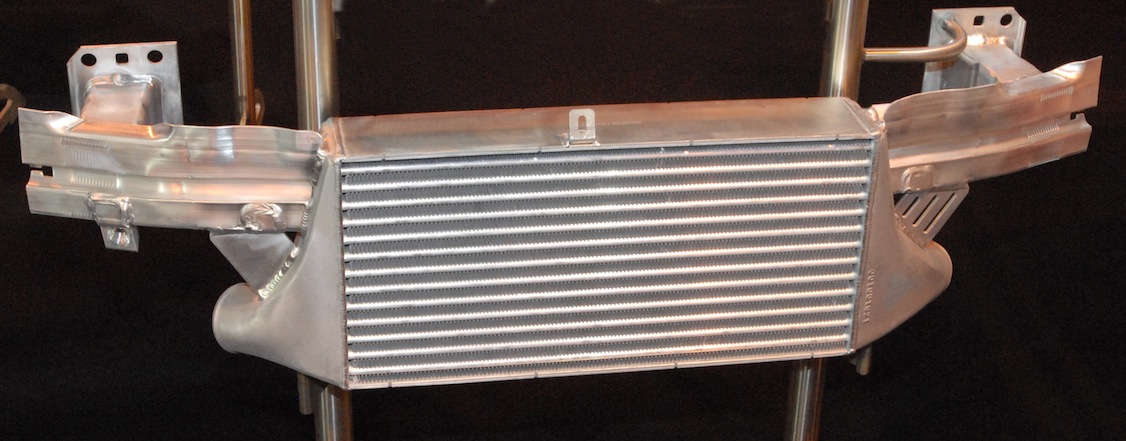The structural intercooler
The turbocharger intercooler may have many performance benefits but almost without exception its installation in the vehicle is rarely without considerable compromise. The unit is either mounted close to the power unit, keeping air intake hose lengths and hence intake air volumes short, or it is positioned somewhere outside the engine bay, around the periphery of the vehicle where the flow of cool air required is more plentiful.
Mounting it near the engine gives acceptable throttle response at the expense of cooling efficiency, whereas placing it on the exterior of the vehicle gives good efficiency and hence power, but results in an installation woefully lacking in engine immediacy. Some years ago the latter may have been fully excusable and tolerated as the price of high turbo performance, but these days there is no such justification. So when it comes to supplying aftermarket intercoolers to create a product that is better than that of the OE vehicle manufacturer, the task will be difficult.
For an intercooler, the critical characteristics are based around the drop in temperature against the pressure loss at a given flow rate. For a 3.0 litre engine, for instance, at peak engine performance and when cooling the compressor outlet temperature from 140 to 40 C, the pressure drop across the cooling unit may be something around say 3 psi (20 kPa). The intercooler unit itself could be 24 in (60 cm) wide by 7 in (18 cm) high and 3 in (8 cm) deep, and given the constraints in the original styling of the vehicle it will be virtually impossible to increase the frontal area of the unit.
The only option might be to increase the depth of the matrix core. Unfortunately, however, doing so leads to greater inefficiency and simply may not be possible giving the space constraint. Positioned at the front of the vehicle, this area is reserved these days for a crushable structure in the event of a head-on collision. Not particularly important in the search for improved 0-60 times, but moments before impact its significance increases out of all proportion to either cost or weight. When faced with conundrums like this though, engineers come up with some ingenious solutions.
I saw one such solution at a recent exhibition. Tasked with the problem of installing a much larger intercooler at the front of the vehicle, the ideal space was occupied by a cross-member at the front that also contributed to the crashworthiness of the vehicle as a crushable zone. Thinking laterally, and using the principle that one component can surely do more than one function – a mantra that should be familiar to everyone in motorsport – the cross-member was modified to include the intercooler, and the intercooler design was also modified to sit inside a 6 mm thick rectangular frame that doubled as the outer wall of the cooling matrix and was also welded into where the original member lay, providing structural rigidity to the vehicle and acting as a crushable structure. Furthermore, the unit was situated at the front, making best use of what air it could find and keeping intake system hose lengths to a minimum.
Indeed, it was a solution that many designers might be proud of. As an aftermarket design, and after recalibrating the fuelling system, this modification may even be better than the original installation.
 Fig - The intercooler as a structural member
Fig - The intercooler as a structural member
Written by John Coxon